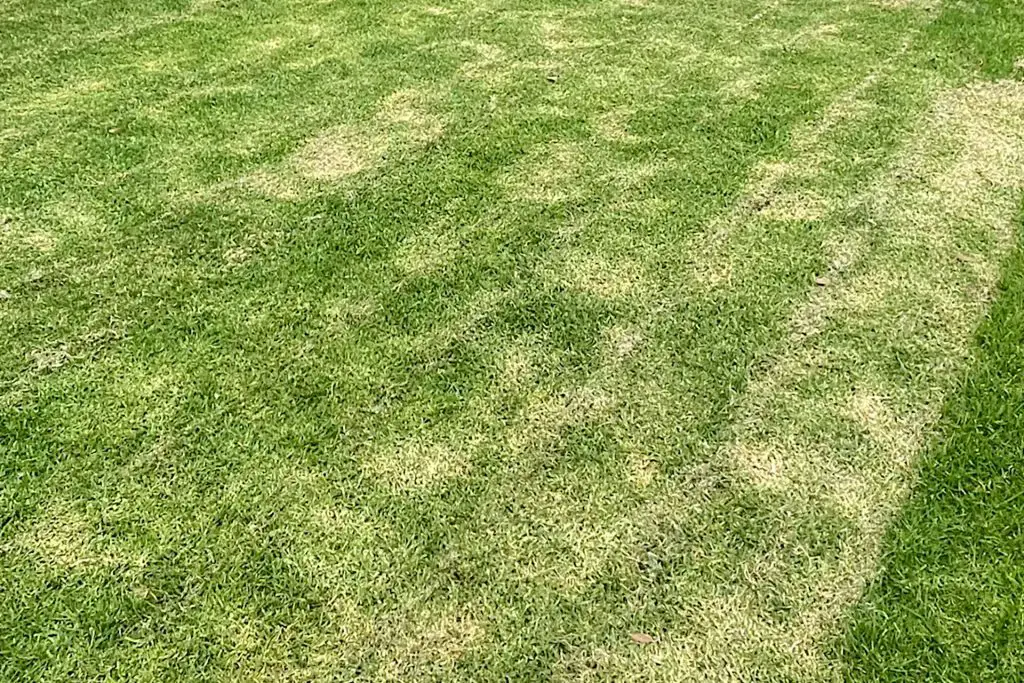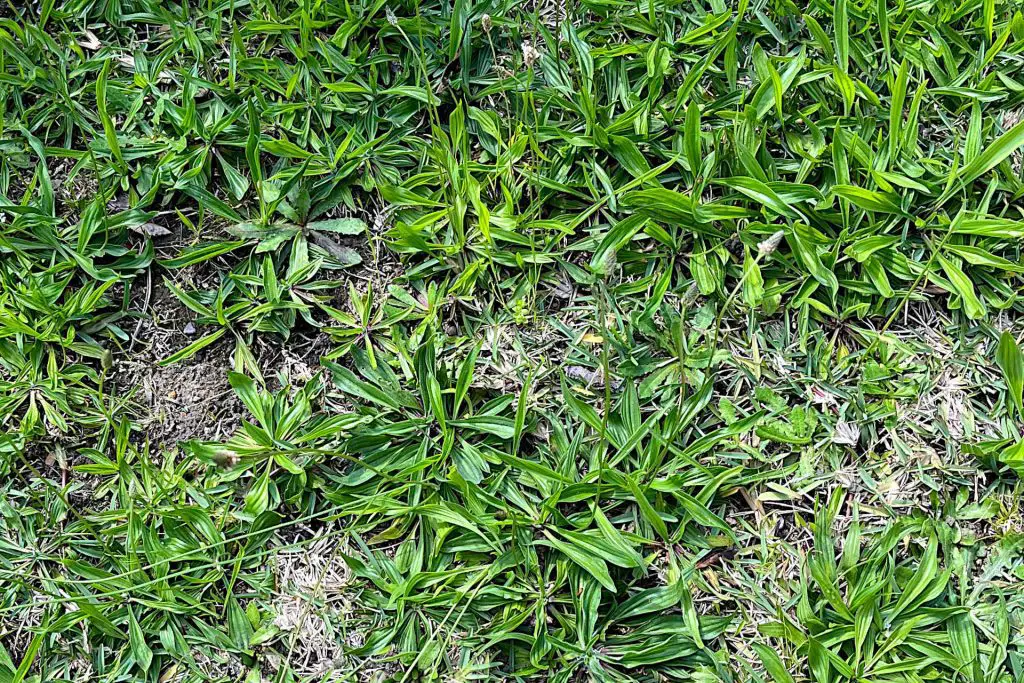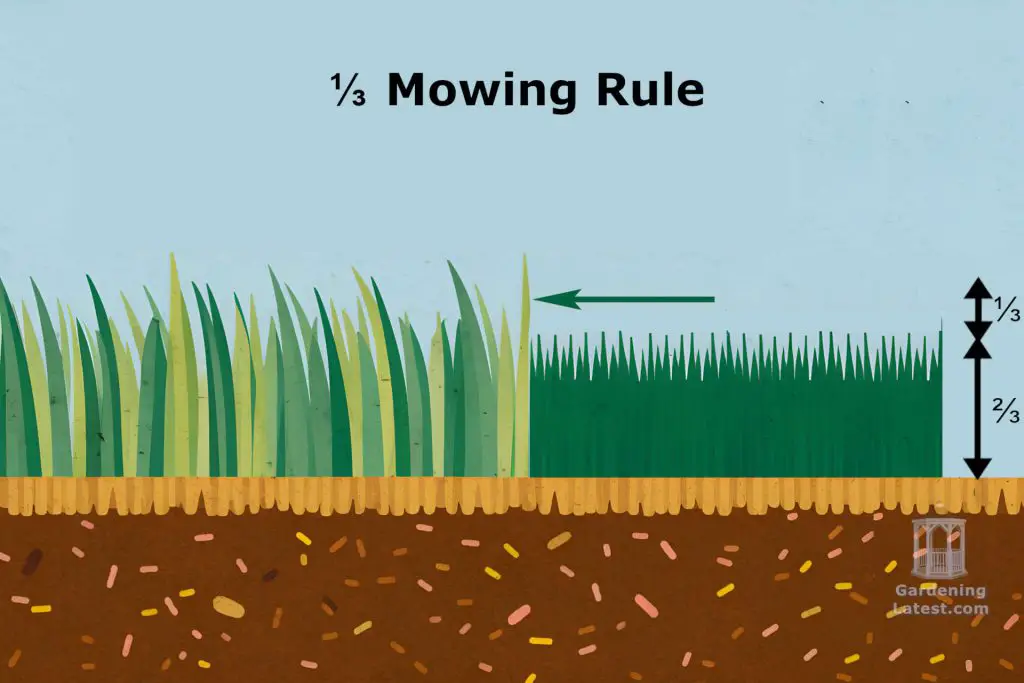Don’t Make Your Lawn Weep: Avoid Mowing Mayhem with The Science Behind Gentle Cuts
Have you ever witnessed a springtime massacre? We’re not talking about a horror movie scene, but something far more common – the ruthless scalping of lawns across neighborhoods. Armed with roaring mowers set to the lowest height, homeowners wage war on their turf, leaving behind a patchy, brown battlefield.
But hold on! Before you reach for your own mower with battle plans in mind, consider this: that aggressive mowing might be doing your precious lawn more harm than good. Contrary to popular belief, a clean-shaven look isn’t the key to a healthy green haven. In fact, it can be the secret weapon stressing your grass and hindering its growth.
Fear not, fellow lawn enthusiasts! Let us be your guide to ditching the “mow mayhem” mentality. We’ll expose the surprising science behind why gentle cuts are the key to a thriving lawn, unveil the hidden environmental cost of aggressive mowing, and equip you with the knowledge to cultivate a green masterpiece you can be proud of. So, put down the metaphorical mower blades, grab a cup of coffee, and read on to find one of the main secrets to a healthy, happy lawn!
The Myth of the “Clean Cut”

Many of us might subscribe to the idea that a shorter lawn equals a cleaner, more manicured look. But what if we told you this “clean cut” philosophy is actually stressing your grass and hindering its growth? Here’s the science behind why:
Leaf Like a Solar Panel
Imagine each grass blade as a tiny solar panel. Inside those green blades lies chlorophyll, a pigment that captures sunlight and converts it into energy through photosynthesis. This energy is crucial for the grass to grow strong and healthy. The more leaf blade area a plant has, the more sunlight it can capture and the more energy it can produce.
Scalping = Energy Shortage
When you aggressively mow and remove a significant portion of the leaf blade, you’re essentially reducing the plant’s solar panel size. This translates to less sunlight captured, less energy produced, and a stressed-out lawn. Think of it like trying to power your entire house with just a single solar panel – it simply wouldn’t be enough.
Beyond the Blade: Root Woes
The impact of aggressive mowing goes beyond just the blades. Taller grass shades the soil, keeping it cool and moist. But when you scalp the lawn, those delicate roots get exposed to the harsh elements. Intense sunlight can scorch them, while drying winds can rob them of precious moisture. This weakened root system struggles to absorb water and nutrients, further hindering the overall health of the lawn.
It is essential to appreciate that a healthy lawn starts with healthy roots. By allowing your grass to maintain a reasonable blade length, you’re not just promoting photosynthesis, you’re also protecting the vital root system below the surface.
Beyond the Green: The Environmental Cost of Mow Mayhem

We all know a beautiful lawn adds aesthetic value to our homes. But what if we told you aggressive mowing practices can have hidden environmental consequences that extend far beyond your backyard?
Weed Warriors Wanted, Not Created
Think that scalping your lawn creates a pristine, weed-free zone? Think again! A healthy lawn with taller blades acts like a natural weed barrier, shading out weed seedlings and preventing them from establishing themselves. Aggressive mowing, however, removes this natural defense, creating open space and ideal conditions for weeds to thrive. Before you know it, you’re battling a weed invasion – which might lead to the use of harsh herbicides, further impacting the environment.
Water Woes: A Hidden Drought
Remember that shade we mentioned earlier? Taller grass shades the soil, helping it retain moisture. When you scalp your lawn, you expose the soil to direct sunlight, leading to increased evaporation. This translates to a thirstier lawn that requires more frequent watering. Not only does this put a strain on your water bill, but it also contributes to overall water resource depletion, especially in areas prone to drought.
Think Globally, Mow Locally
The effects of aggressive mowing can even extend beyond your lawn. When grass clippings are excessively removed, they don’t have a chance to decompose and return valuable nutrients to the soil. This can lead to soil erosion, impacting the overall health of your local ecosystem. Additionally, shorter grass offers less cover for beneficial insects like pollinators, potentially disrupting the delicate balance of the local environment.
Mow with Mother Nature in Mind
If you adopt more gentle mowing practices, you’re not just helping your lawn; you’re contributing to a healthier planet. Think of it as a small act with a big impact!

From the Grounds Up: Experts Weigh In on Gentle Mowing
The science is clear: aggressive mowing stresses your lawn. But what do the experts have to say about this springtime ritual? Renowned British gardening personality Monty Don echoes our sentiments in his latest blog post, urging readers to resist the urge to scalp their lawns:
“Whatever your grass-cutting inclinations, resist the temptation to scalp your grass down to its midsummer height.”
[ Monty Don]
Don emphasizes a gradual approach, highlighting the benefits of:
- Setting the mower blades high for the first few cuts.
- Trimming the grass primarily to even it out, rather than drastically reducing its height.
- Gradually lowering the blade height over several weeks as the weather warms and the grass grows.
- Maintaining a slightly longer blade length throughout the season.
This aligns perfectly with the concept of gentle mowing we’ve been advocating for. By following these expert tips, you’ll be promoting a healthier lawn and a more sustainable gardening practice.
Final Thoughts: Cultivating a Thriving Lawn, One Gentle Cut at a Time
The urge to achieve a “clean cut” lawn in early spring might seem like the right approach, but as we’ve explored, lowering the mower deck height significantly for the first mow of spring can have a significant negative impact on your lawn’s health and the environment.
Remember: A healthy lawn doesn’t require a military-style haircut. By embracing gentle mowing practices, you’ll be promoting:
- Stronger, healthier grass: With more leaf blade area, your lawn can capture more sunlight, leading to better photosynthesis and a thriving root system.
- A natural defense against weeds: Taller grass shades out weed seedlings, preventing them from establishing themselves.
- Water conservation: A healthy lawn with taller blades retains moisture more effectively, reducing the need for frequent watering.
- A healthier ecosystem: Gentle mowing practices promote soil health and provide habitat for beneficial insects, contributing to a thriving local environment.
So, the next time you reach for your mower, ditch the “mow mayhem” mentality. Embrace a gentle approach, and witness the transformation of your lawn into a lush, green haven that benefits both your home and the planet.
Bonus Tip: Consider leaving grass clippings on the lawn after mowing (except for very tall grass). These clippings decompose and return valuable nutrients to the soil, further promoting a healthy lawn ecosystem.
